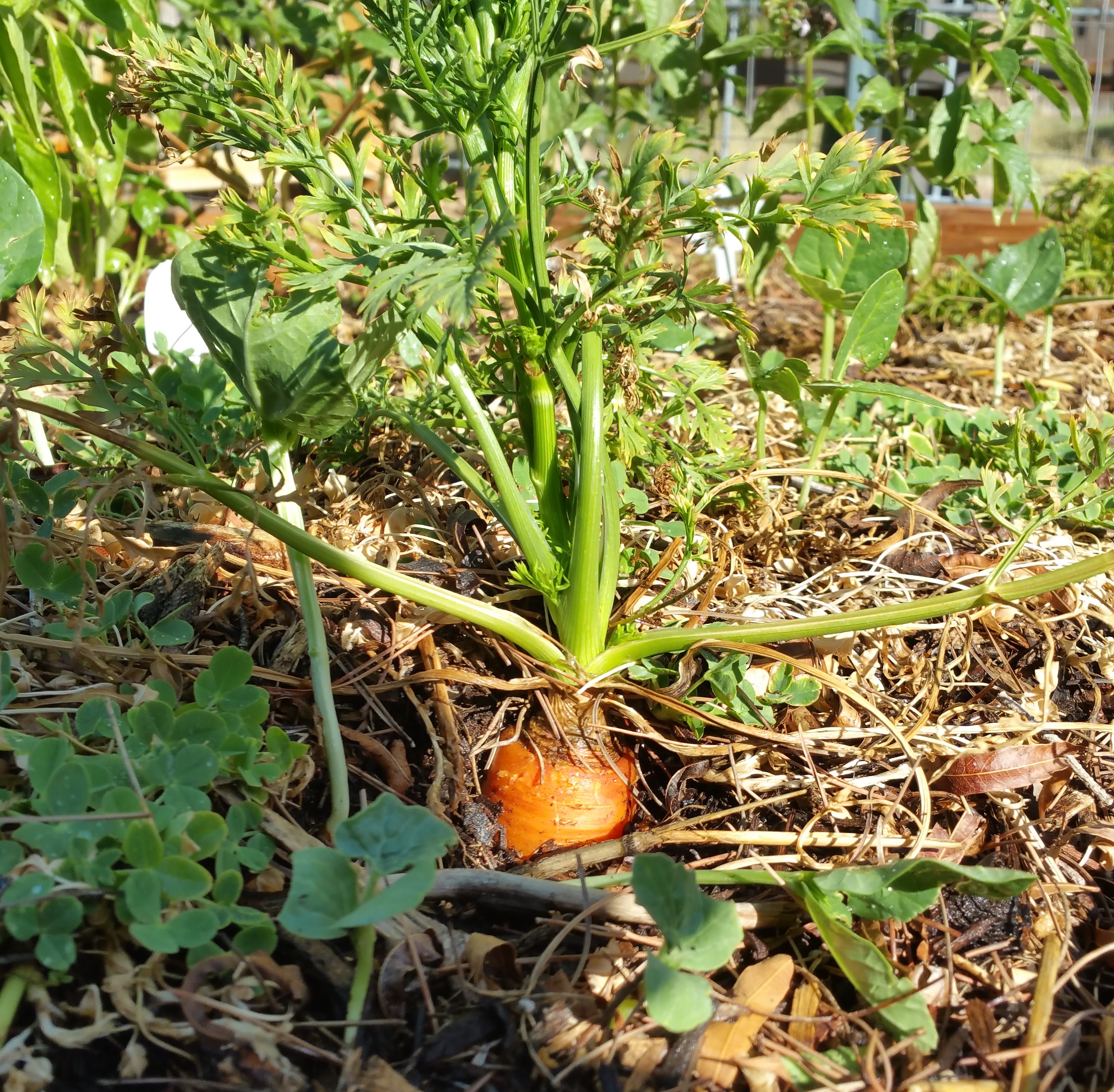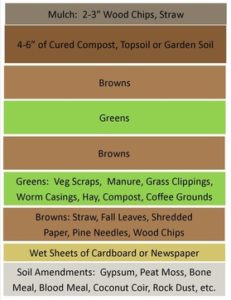 Sheet mulching is a great way to build soil and compost in place, eliminating the need to move finished compost from the pile to the garden. Also known as Lasagna Gardening, building a sheet mulch garden is a process of layering brown and green organic materials directly in a garden bed.
Sheet mulching is a great way to build soil and compost in place, eliminating the need to move finished compost from the pile to the garden. Also known as Lasagna Gardening, building a sheet mulch garden is a process of layering brown and green organic materials directly in a garden bed.
What are browns and greens? Browns are organic materials that have been dead for a while, or that have been processed, such as dry leaves or shredded paper. They are very stable and break down slowly. Greens are organic materials that were recently alive, such as salad trimmings and yard waste. They tend to decay quickly.
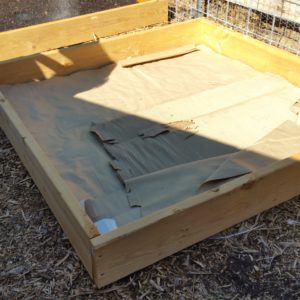 To create a lasagna garden, start by laying out your garden bed. The easiest way to do so is to build a raised bed out of wood, stone or cement blocks. It is not necessary to till the soil beneath the bed, unless you need to remove invasive plants, such as Bermuda grass. Line the bottom of the bed with a thick layer of cardboard or newspaper and get it sopping wet.
To create a lasagna garden, start by laying out your garden bed. The easiest way to do so is to build a raised bed out of wood, stone or cement blocks. It is not necessary to till the soil beneath the bed, unless you need to remove invasive plants, such as Bermuda grass. Line the bottom of the bed with a thick layer of cardboard or newspaper and get it sopping wet.
Then, begin to build layers of brown and green materials, in a similar manner to assembling a lasagna. This can be done in one day, or over a period of time as you collect the necessary materials.
Picture
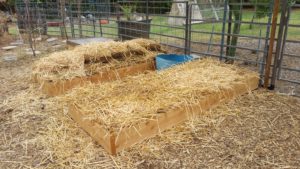 If you are short of materials, contact your local arborist and ask if they will deliver a load of wood chips to your house, or visit your nearby café to request coffee grounds and other compostable materials. Another idea is to purchase a bale of spoiled hay or garden hay from a feed store, and to ask your neighbors for their bagged grass clippings.
If you are short of materials, contact your local arborist and ask if they will deliver a load of wood chips to your house, or visit your nearby café to request coffee grounds and other compostable materials. Another idea is to purchase a bale of spoiled hay or garden hay from a feed store, and to ask your neighbors for their bagged grass clippings.
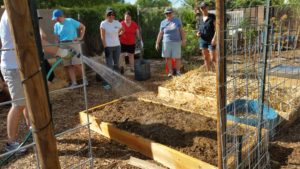 Keep the materials approximately as wet as a wrung out sponge, and always keep a layer of brown materials on top of the pile to deter pests. Once the bed is full, keep it moist and allow it to break down naturally over a period of months. If you want to speed up the process, turn the pile with a pitch fork periodically. Once the materials look, smell and feel like soil, mix in a few inches of native soil or garden soil purchased from the nursery, and you are ready to plant!
Keep the materials approximately as wet as a wrung out sponge, and always keep a layer of brown materials on top of the pile to deter pests. Once the bed is full, keep it moist and allow it to break down naturally over a period of months. If you want to speed up the process, turn the pile with a pitch fork periodically. Once the materials look, smell and feel like soil, mix in a few inches of native soil or garden soil purchased from the nursery, and you are ready to plant!
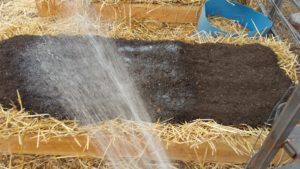 Another option is to fill the bed to within 12 inches of the top edge. Instead of waiting for the materials to break down, cover them with a foot of potting soil or garden soil, and grow in the top layer of the bed while the materials beneath are still decomposing. I recommend planting cover crops, such as beans, peas, or clover to help increase the nitrogen levels in the bed. At first, a garden assembled in this manner may not grow at peak performance. But, over time, its productivity will improve and you will have created nutrient-rich soil that holds water and grows fabulous veggies with minimal effort. Give it a try!
Another option is to fill the bed to within 12 inches of the top edge. Instead of waiting for the materials to break down, cover them with a foot of potting soil or garden soil, and grow in the top layer of the bed while the materials beneath are still decomposing. I recommend planting cover crops, such as beans, peas, or clover to help increase the nitrogen levels in the bed. At first, a garden assembled in this manner may not grow at peak performance. But, over time, its productivity will improve and you will have created nutrient-rich soil that holds water and grows fabulous veggies with minimal effort. Give it a try!
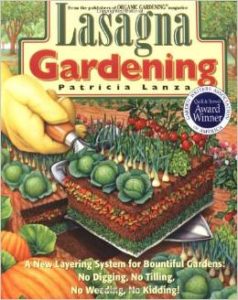 Want to dig deeper?
Want to dig deeper?
Read Lasagna Gardening: A New Layering System for Bountiful Gardens: No Digging, No Tilling, No Weeding, No Kidding! by Patricia Lanza
Sheet Mulch ~ Lasagna Gardening by Oregon State University Extension Service Lane County
